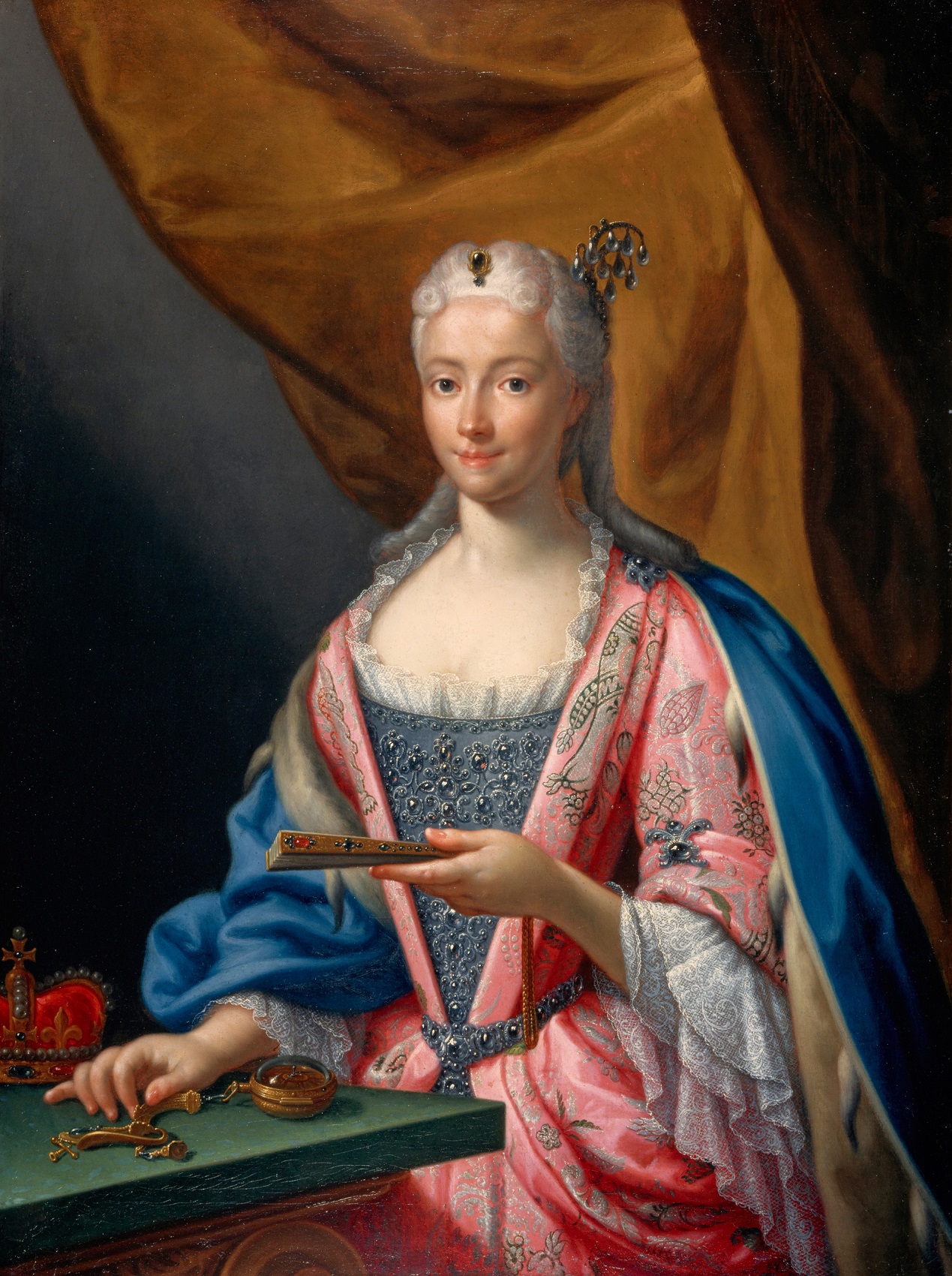
In the seventeenth and eighteenth century the craft of music—both playing and singing—became a part of the canon of proper education for aristocrats and wealthy burghers. Young girls received instruction primarily in playing keyboard instruments—harpsichord, clavichord, or pianoforte. Boys would choose between violin and cello, the latter being perceived as unsuitable for handling by ladies. Wind instruments were also deemed unbecoming of the fair sex, like the flute, which gravely distorted the player’s facial expression. Maria Klementyna Sobieska figured among comprehensively educated young women: during her early days in Oława she acquired fluency in three languages—Polish, French, and Hochdeutsch—as well as Latin and Italian. Already during her sojourn in Rome, English tourists complemented her perfect command of her husband’s native tongue. With her excellent manners, she was considered a charming lady, and she loved music. Though it has not yet been established what instruments she played, it would be hard to imagine her unable to perform a simple piece for harpsichord or lute.
Klementyna’s passion for music also moved her and her husband to organise private concerts for the Roman elites at their residence, the Palazzo del Re. According to an account by an English gentleman, the Stuarts employed the finest artists in the city. Klementyna and James usually treated their guests to performances by Stuart’s favourite singer, Pasqualino Tiepoli, but on a certain April night of 1723, the visitors at the palace listened to Faustina Bordoni, a famous performer who was subsequently honoured with a medal bearing the portraits of the hosts.
Born in 1720 and 1725 the sons of Maria Klementyna and James III took lessons on several instruments since an early age. The elder, first-born Charles, exhibited particular musical talents. Both boys also loved to dance; their abilities are recorded in coloured miniatures found at Bologna. James III also invited actors of a marionette theatre to his palace to entertain the boys. Like their parents, Charles and Henry liked the opera. After the death of Maria Klementyna the theatres of Rome dedicated several works to them. The young Stuarts became important patrons of art—particularly the younger Henry.
Translation: Antoni Górny
We would like to inform that for the purpose of optimisation of content available on our website and its customisation according to your needs, we use information stored by means of cookies on the Users' end devices. You can control cookies by means of your Internet browser settings. Further use of our website without change of the browser settings means that you accept the use of cookies. For more information on cookies used by us and to feel comfortable about this subject, please familiarise yourselves with our Privacy Policy.
✓ I understand